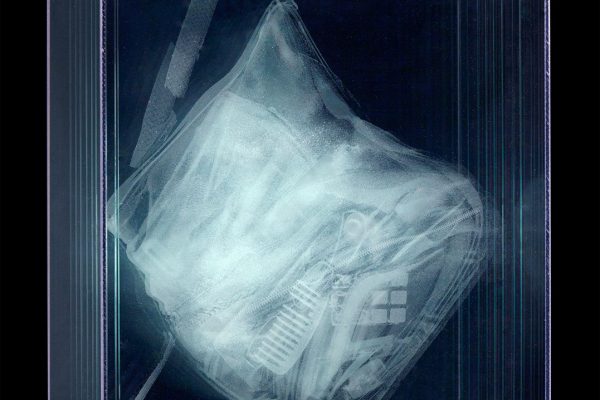Everything we see is viewed through a series of transparencies, beginning with the lens of the eye. For David Spriggs, transparency, whether optical or metaphorical, is the key to understanding the intricate relationship between vision and power. In his newest exhibition, ‘Transparency Report’, Spriggs uses transparency both as the subject and as the medium for his art.
With this exhibition Spriggs expands on his signature style of layering images in space, this time to produce four stunning transparent representations of luggage bags and their contents. The artist takes particular care to ensure that every aspect of the works is transparent – from the imagery, to the materials, even the display cases. Created by layering multiple engraved sheets of glass that together reveal the three-dimensional forms, the works are displayed single file as though they are baggage on an airport conveyor belt under the analysis of surveillance technologies. It is however the viewer who is invited to scrutinize the four bags and their contents that serve to form the four hypothetical identities: ‘Profile Type A’, ‘Profile Type B’, ‘Profile Type C’, and ‘Profile Type D’.
The title of Spriggs’ exhibition, ‘Transparency Report’, is a term used by governments and corporations to indicate the degree of openness to information they are willing to provide. Contrary to society’s underlying assumption that obscurity and opacity are not to be trusted, in the case of Spriggs’ ‘Profile Types’, it is through varying degrees of opacity that the contents of each bag is revealed.
Transparency is undoubtedly a tool for control; it is rarely consensual and is most often imposed. Through the four ghostly representations of David Spriggs ‘Transparency Report’, we are urged to consider the broader issue of how transparency both facilitates and implies the overwhelming dominance of institutional power over our lives.













